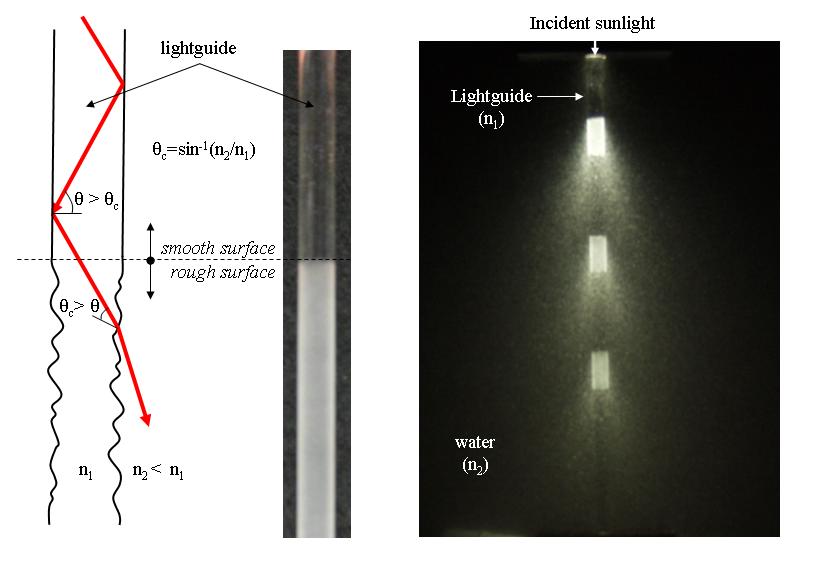The saturation fluence rate of photosynthetic apparatus is on the order of 5,000 to 6,000 lux. This corresponds to about one tenth of the total solar irradiance where the rest of the energy is wasted as heat and fluorescence. Thus, light can be delivered to 10 times larger surface area using solar collectors and lightguides to enhance the solar energy utilization efficiency. To do so, cost effective light delivery technologies need to be developed and integrated into the design of future photobioreactors.
The simplest solution is to divide the incident solar radiation and deliver it on two sides of a flat panel PBR instead of on a single side. In fact, it has been reported that two-side illumination resulted in greater lipid productions and efficiency than one-side illumination with twice the incident irradiance to ensure that the same amount of energy was delivered.
Moreover, system engineers are designing novel photobioreactors that collect and deliver sunlight in a controlled manner within the photobioreactor. These systems usually involve a heliostat comprised of either fresnel lenses or reflective dishes that concentrate the solar radiation to be distributed via fiber optics or lightguides.

Principle and demonstration of lightguide 6.4 mm in diameter with alternatively rough sections separated by 2.54 cm long smooth regions for controlled light delivered at desired depths inside a photobioreactor.
Publications
L. Pilon, H. Berberoğlu, and R. Kandilian, 2011. Radiation Transfer in Photobiological CO2 Fixation and Fuel Productionby Microalgae, Journal of Quantitative Spectroscopy and Radiation Transfer (in press). doi10.1016/j.jqsrt.2011.07.004
H. Berberoglu, J. Yin, and L. Pilon, 2007. Light transfer in bubble sparged photobioreactors for H2 production and CO2 mitigation, International Journal of Hydrogen Energy, Vol. 32, no.13, pp. 2273 – 2285. doi:10.1016/j.ijhydene.2007.02.018
J. Yin and L. Pilon, 2006. Efficiency Factors and Radiation Characteristics of Spherical Scatterers in Absorbing Media. Journal of the Optical Society of America, A. Vol. 23, No.11, pp.2784-2796. doi:10.1364/JOSAA.23.002784
H. Berberoglu and L. Pilon, 2007. Experimental Measurements of the Radiation Characteristics of Anabaena variabilis ATCC 29413-U and Rhodobacter sphaeroides ATCC 49419, International Journal of Hydrogen Energy,Vol. 32, pp.4772-4785. doi:10.1016/j.ijhydene.2007.08.018
H. Berberoğlu, N. Barra, L. Pilon, and J. Jay, 2007. Growth, CO2 Consumption, and H2 Production of Anabaena Variabilis Under Various Light Fluxes and CO2 Concentrations, Journal of Applied Microbiology, Vol.104, pp.105-121. doi: 10.1111/j.1365-2672.2007.03559.